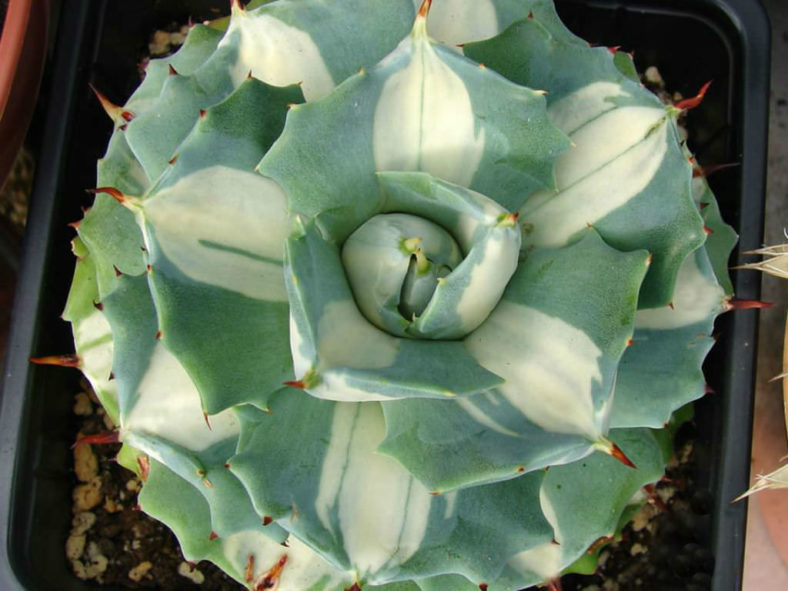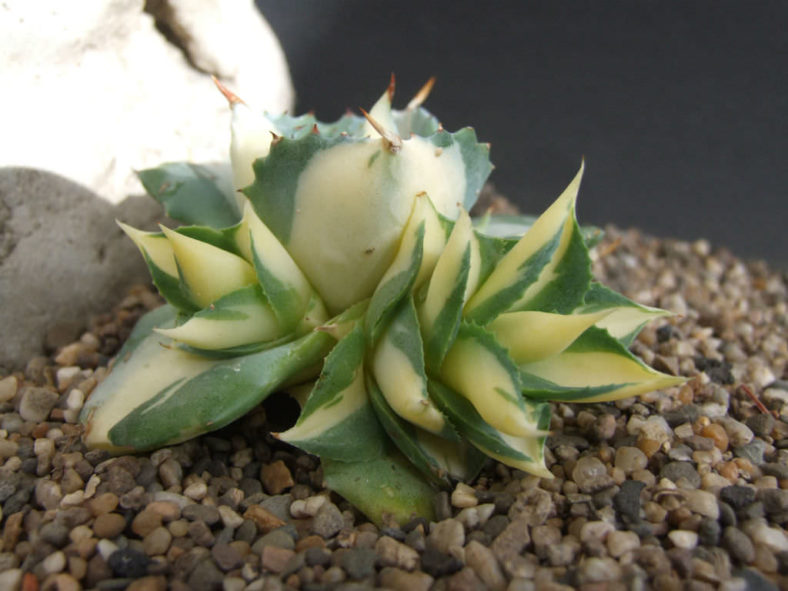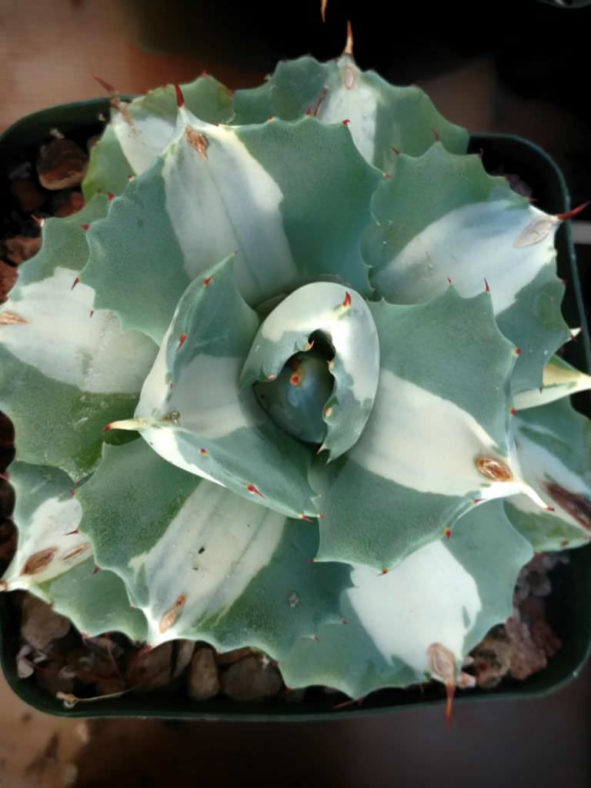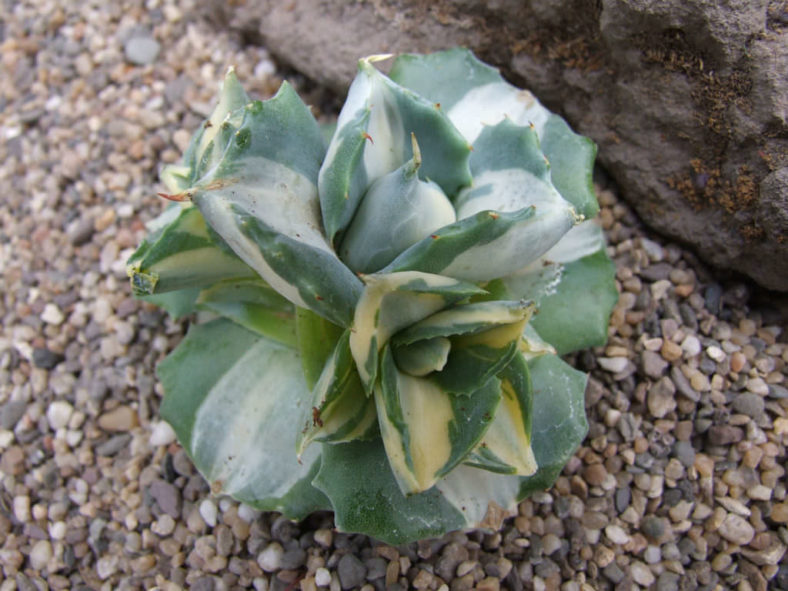Scientific Name
Agave isthmensis 'Ohi Raijin Shiro Nakafu'
Common Name(s)
Variegated Dwarf Butterfly Agave, White-centered Thunder Queen
Synonym(s)
Agave isthmensis 'Mediopicta Alba'
Scientific Classification
Family: Asparagaceae
Subfamily: Agavoideae
Genus: Agave
Origin
Agave isthmensis 'Ohi Raijin Shiro Nakafu' is a rare variegated cultivar of Agave isthmensis.
Description
Agave isthmensis 'Ohi Raijin Shiro Nakafu', also known as Agave isthmensis 'Mediopicta Alba', is an attractive small succulent that forms a dense clump of rosettes of powdery blue-green leaves with broad cream midstripe. The rosettes can grow up to 4 inches (10 cm) in diameter, producing offsets from the leaf axils. The leaves have dark reddish-brown teeth along the margins and a sharp terminal spine.

Hardiness
USDA hardiness zone 9b to 11b: from 25 °F (−3.9 °C) to 50 °F (+10 °C).
How to Grow and Care
Agave is not a difficult plant to grow. They're slow-growing and dramatic and will even thrive on a bit of neglect. If you're the type of person who likes to fuss with houseplants and water a lot, Agave is probably not the plant for you. If, however, you're the type of person who likes to set it and forget it, and you have a sunny window, Agave might be the way to go. Be aware that some large varieties will eventually outgrow your room (unless you have a large greenhouse), and Agave can be aggressive. They have irritating sap and sometimes very sharp thorns that can cause injuries to small children and even pets.
In general, Agaves do not need to be repotted every year. Most species commonly found in cultivation grow slowly and take a long to outgrow their pot. It's also best to handle your Agave as little as possible since they do not like to be disturbed. When repot, refresh the spent soil with a new potting mix and make sure the plant is firmly anchored in its pot.
See more at How to Grow and Care for Agave.
Links
- Back to genus Agave
- Succupedia: Browse succulents by Scientific Name, Common Name, Genus, Family, USDA Hardiness Zone, Origin, or cacti by Genus
Photo Gallery
Click on a photo to see a larger version.


